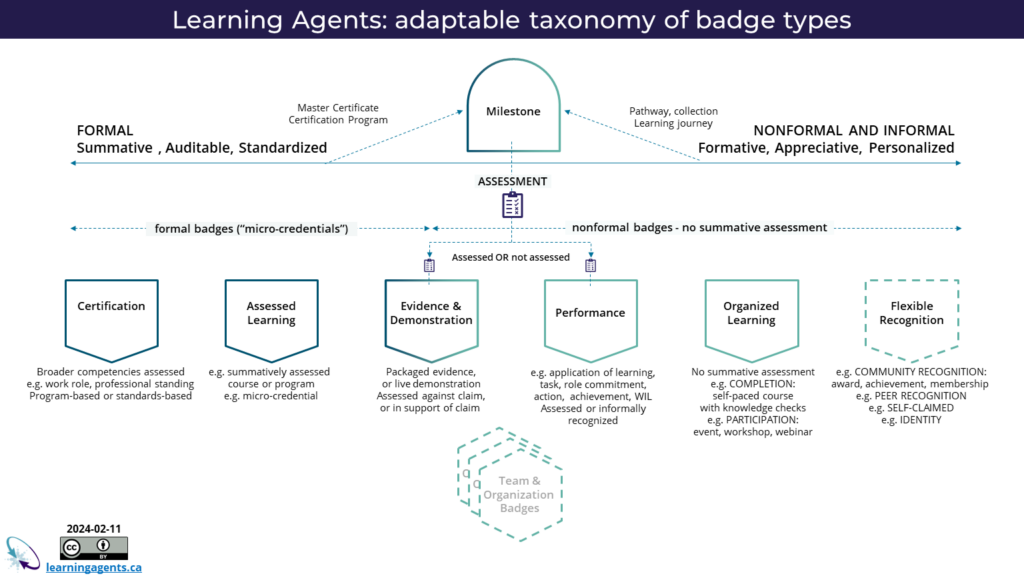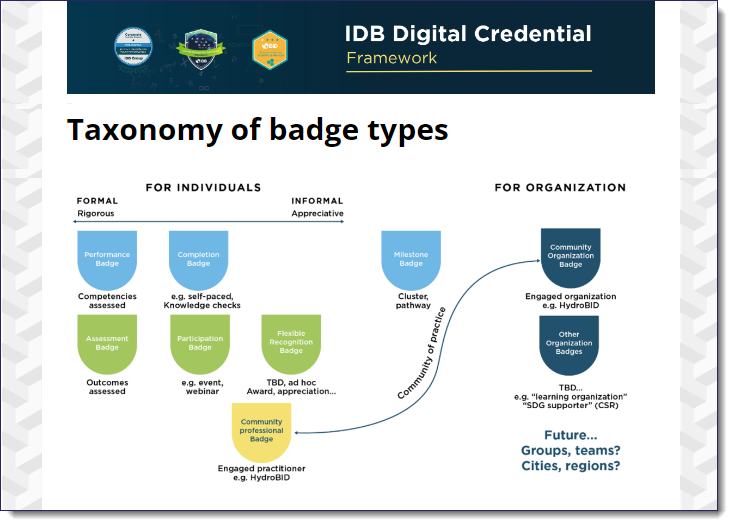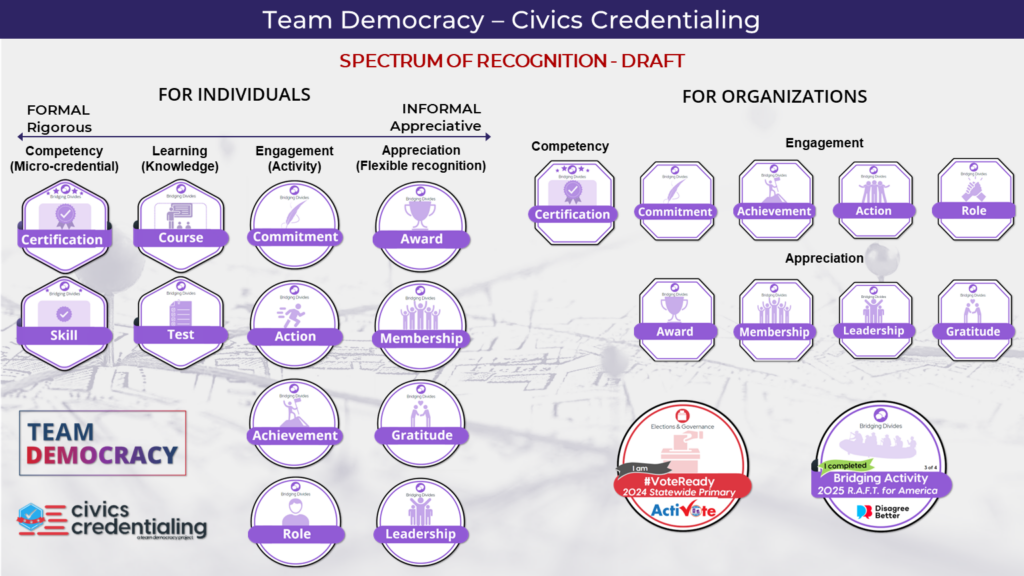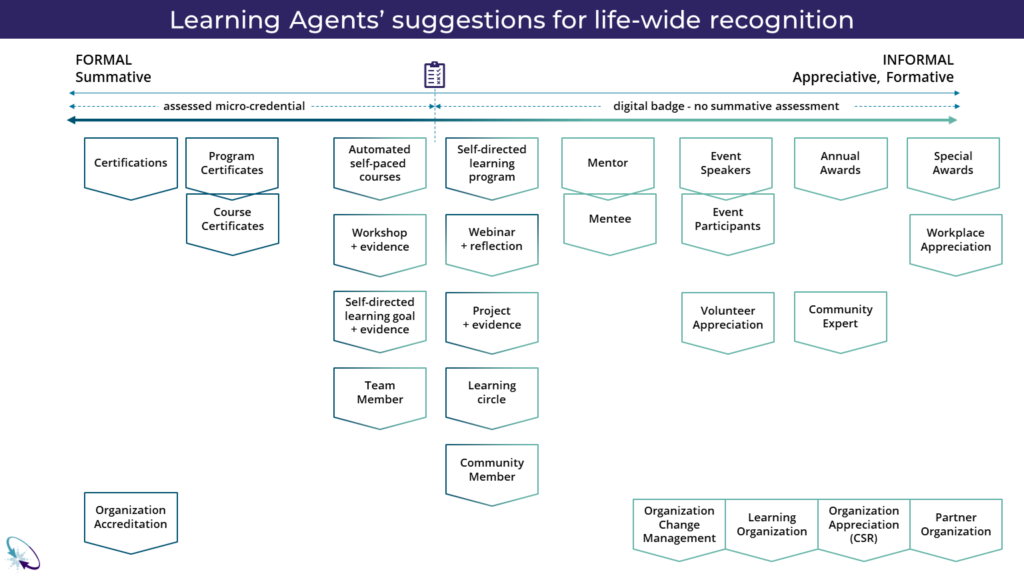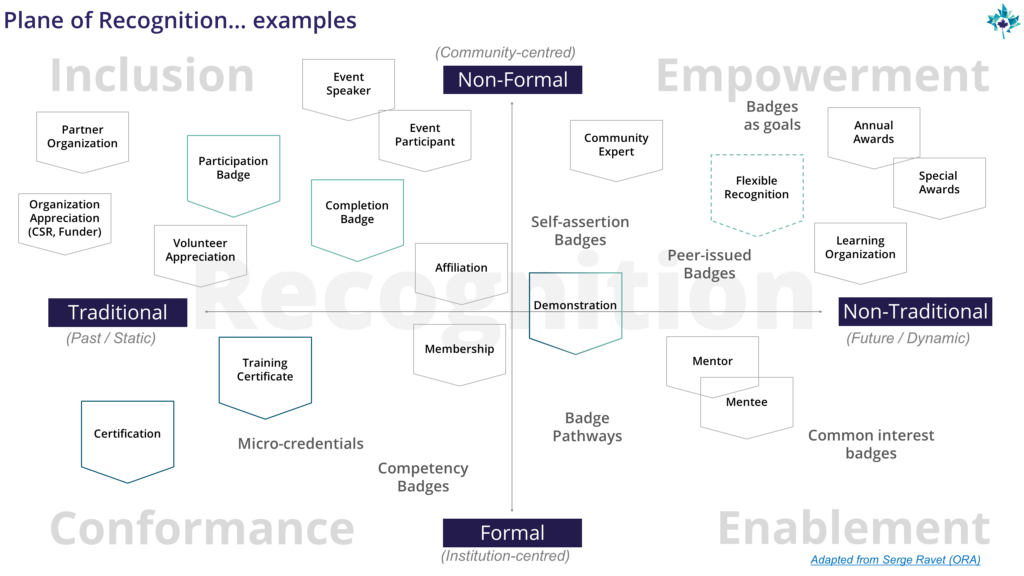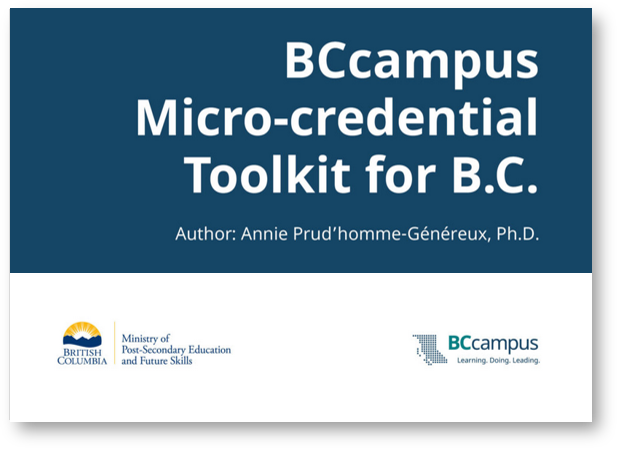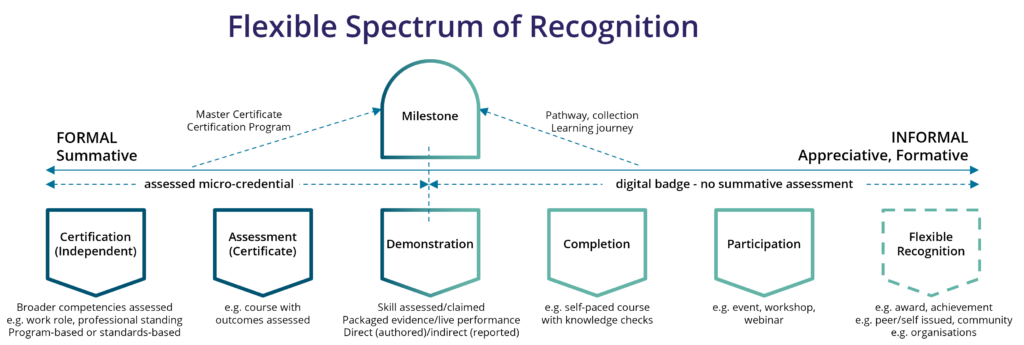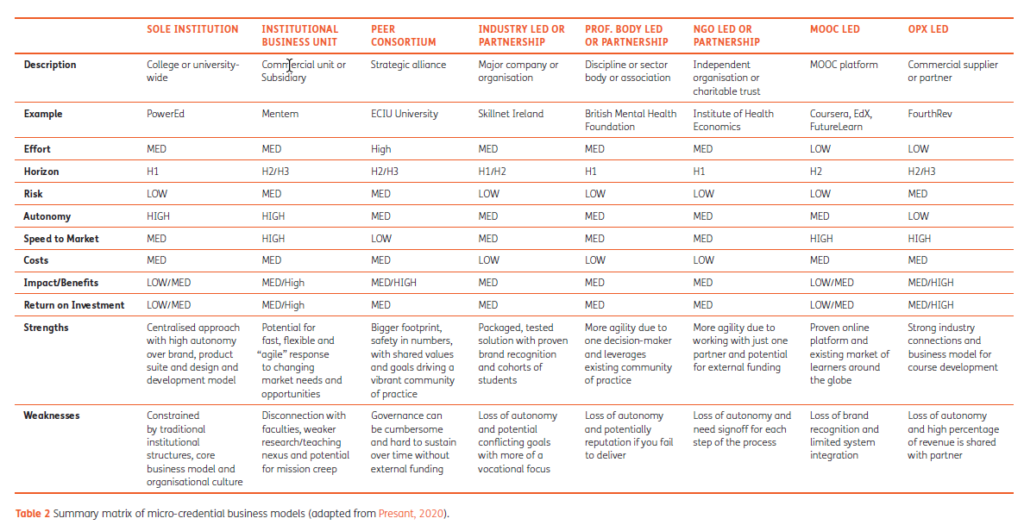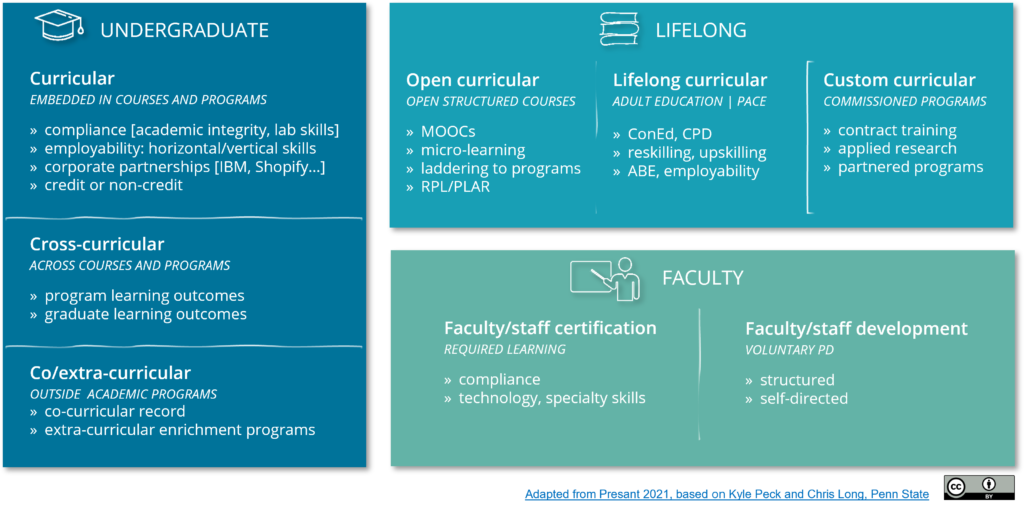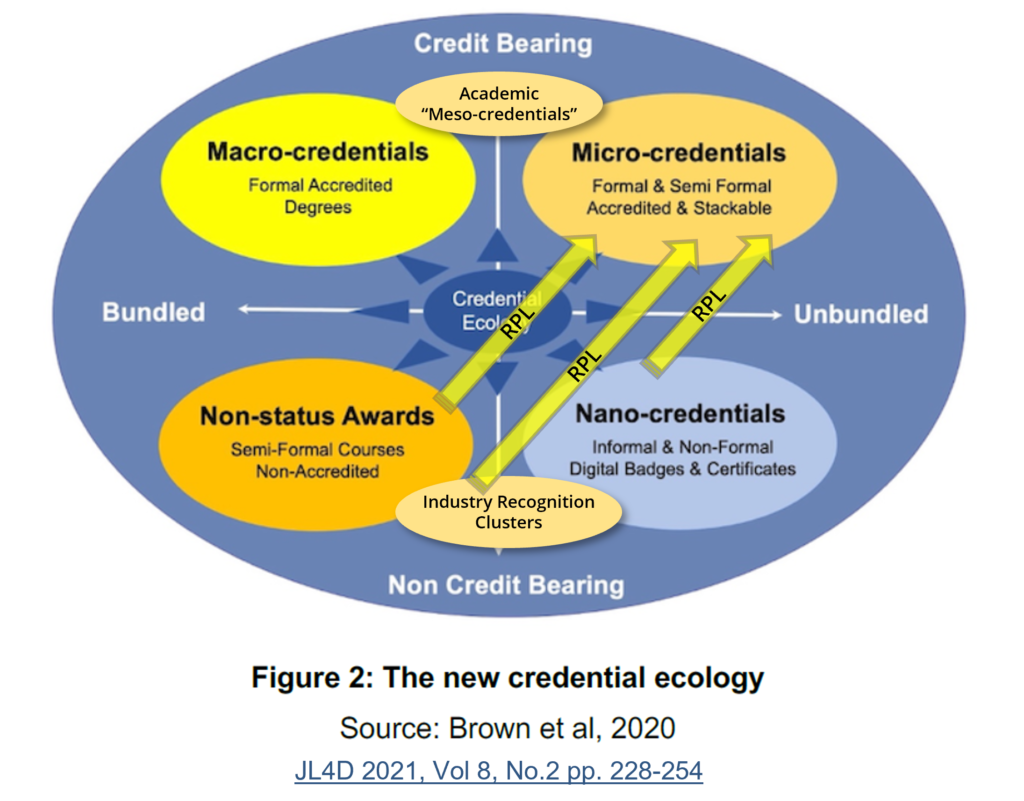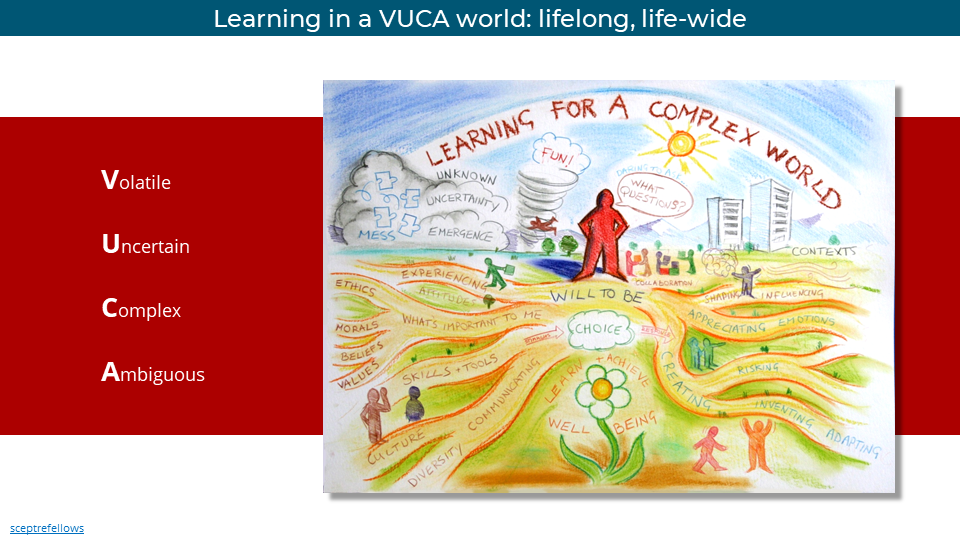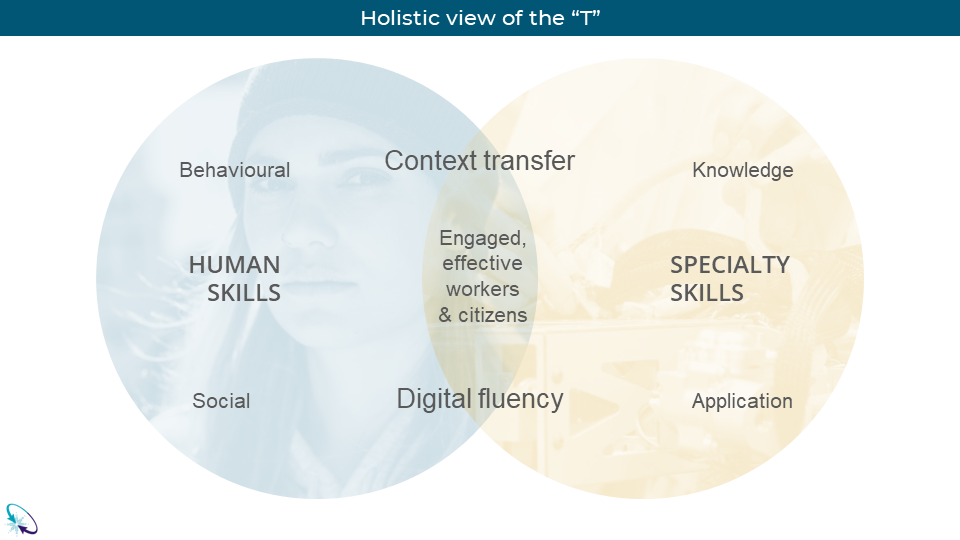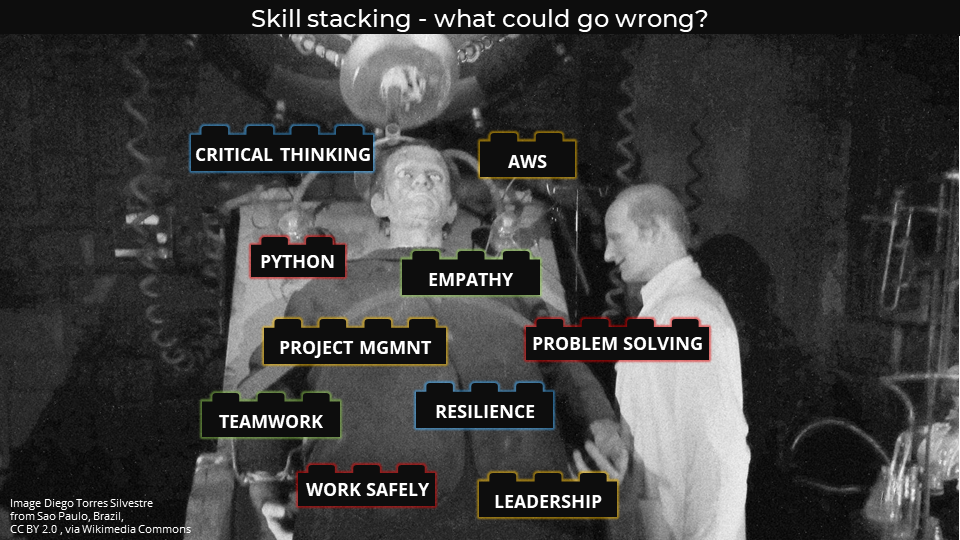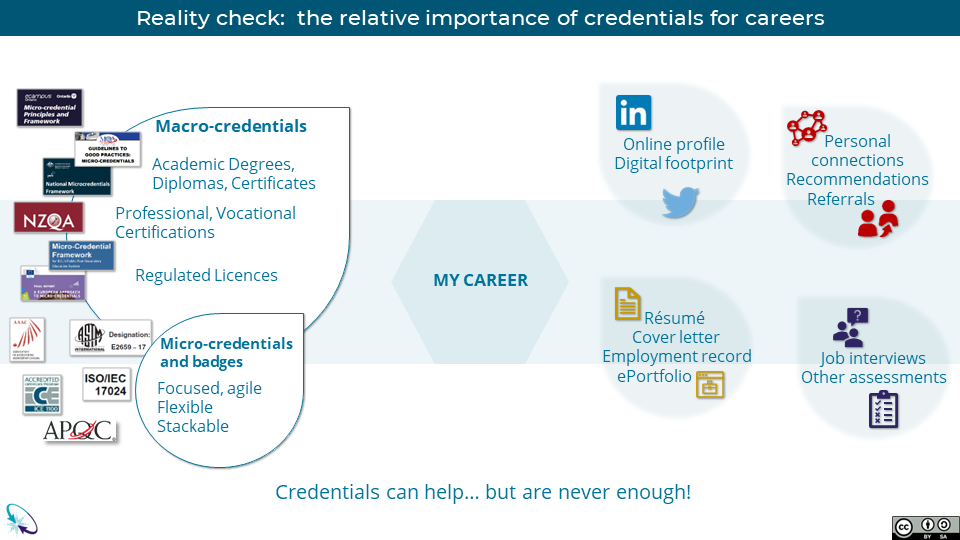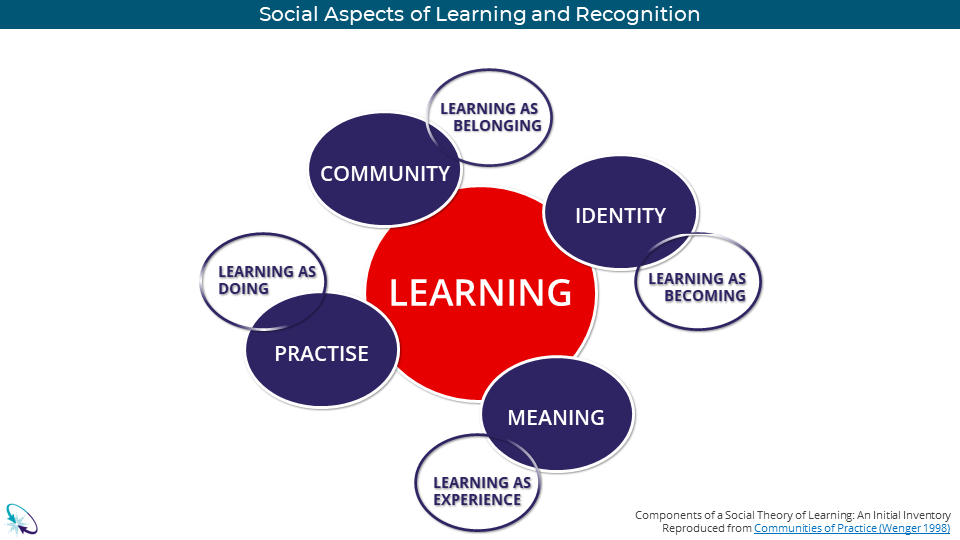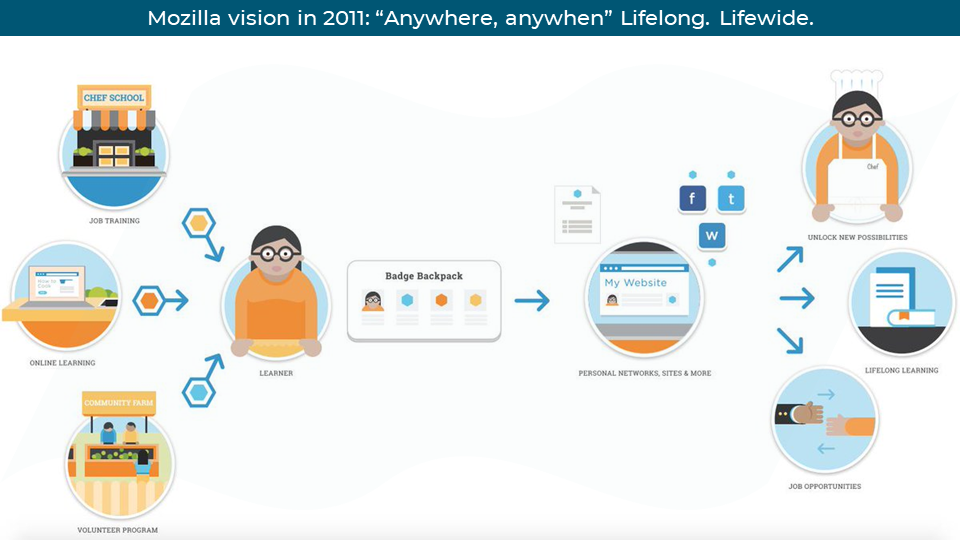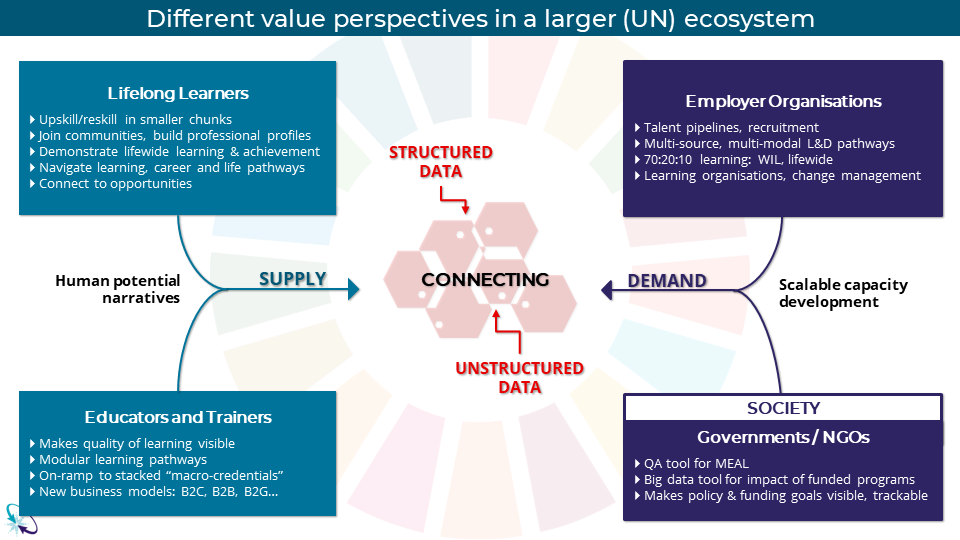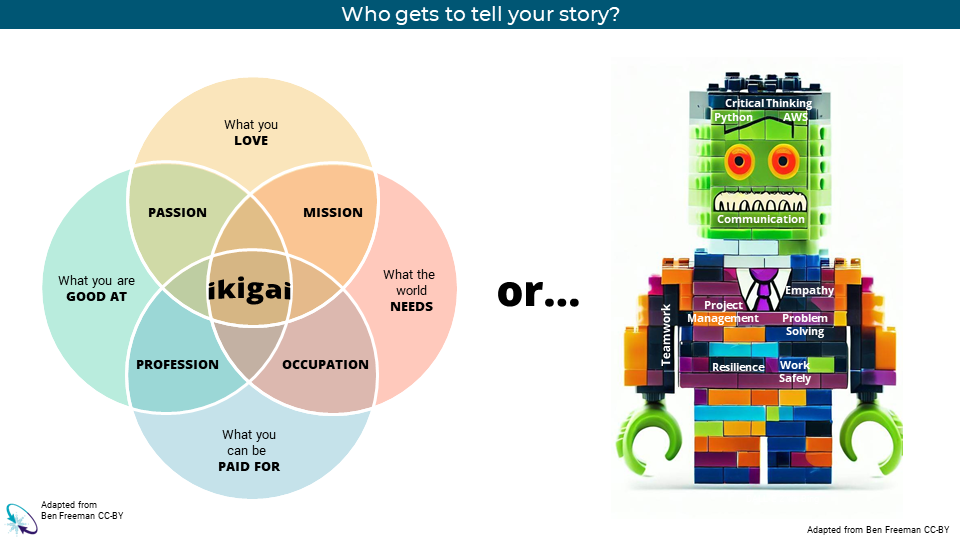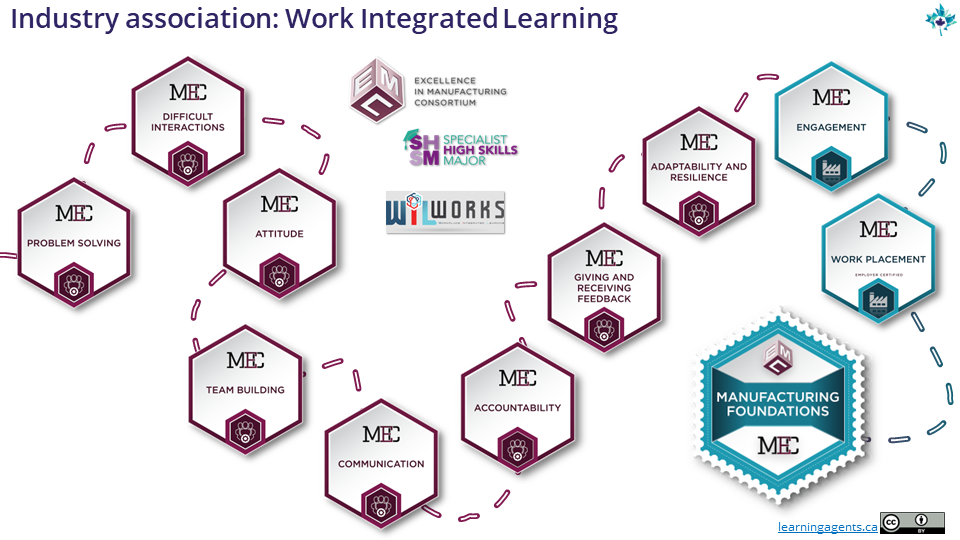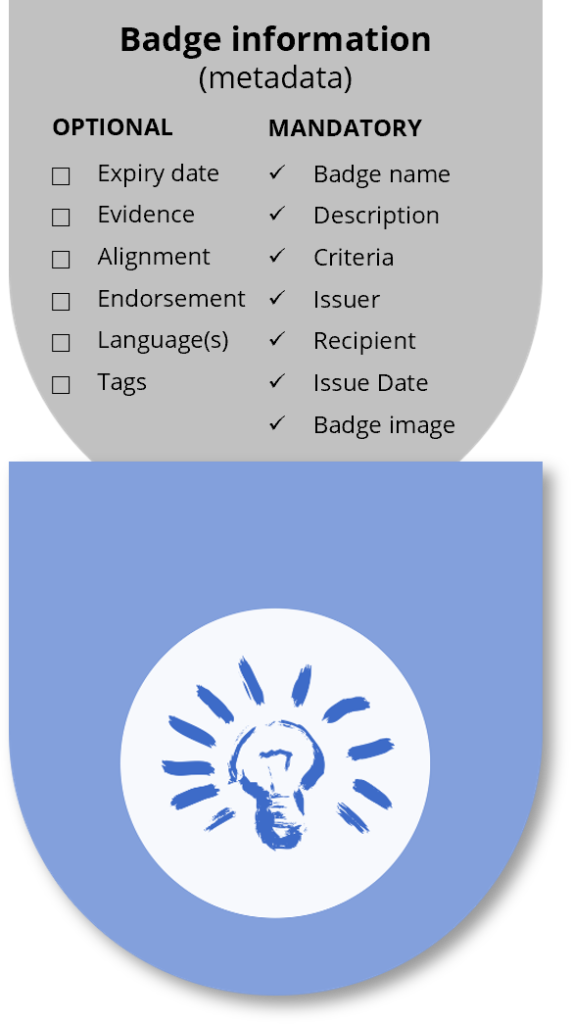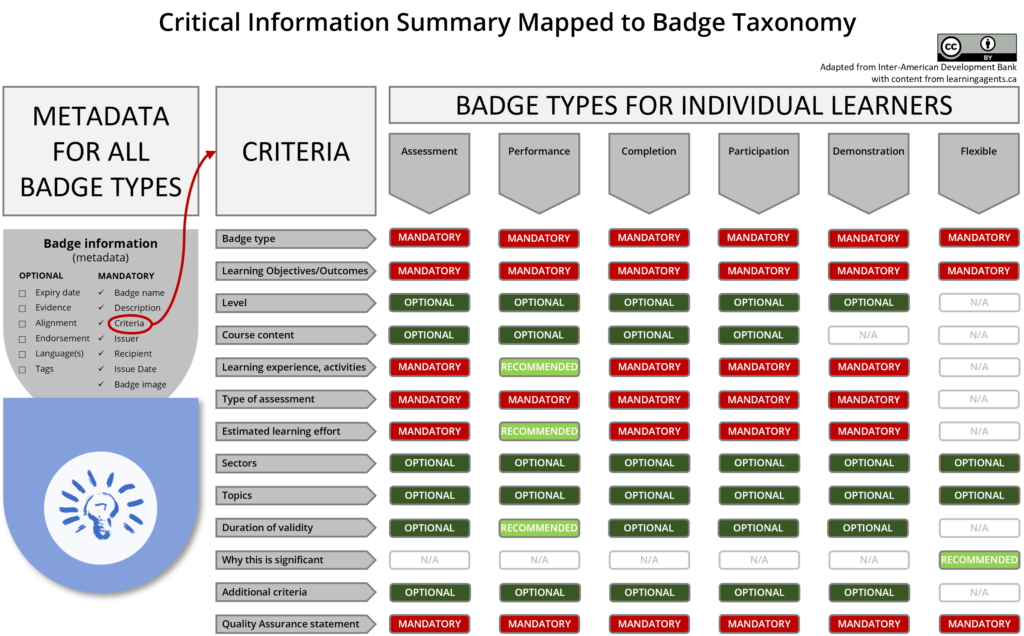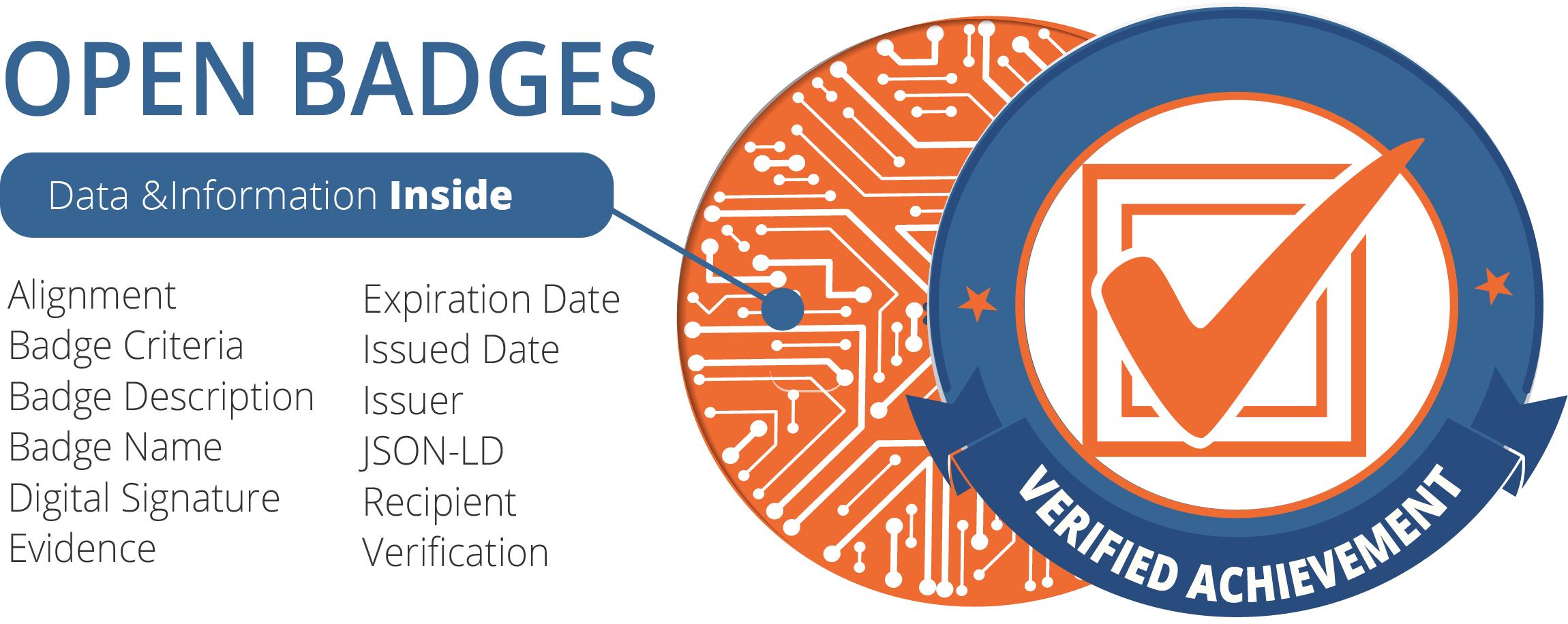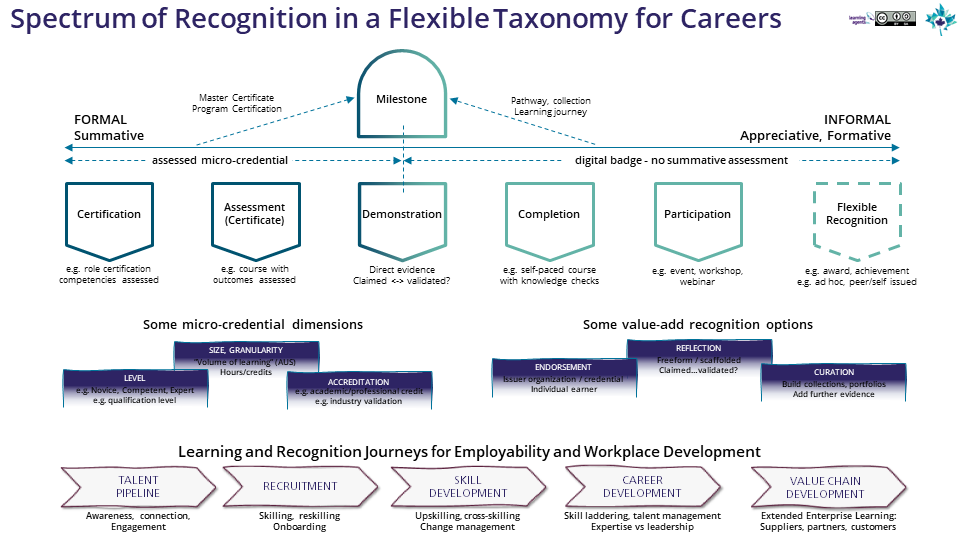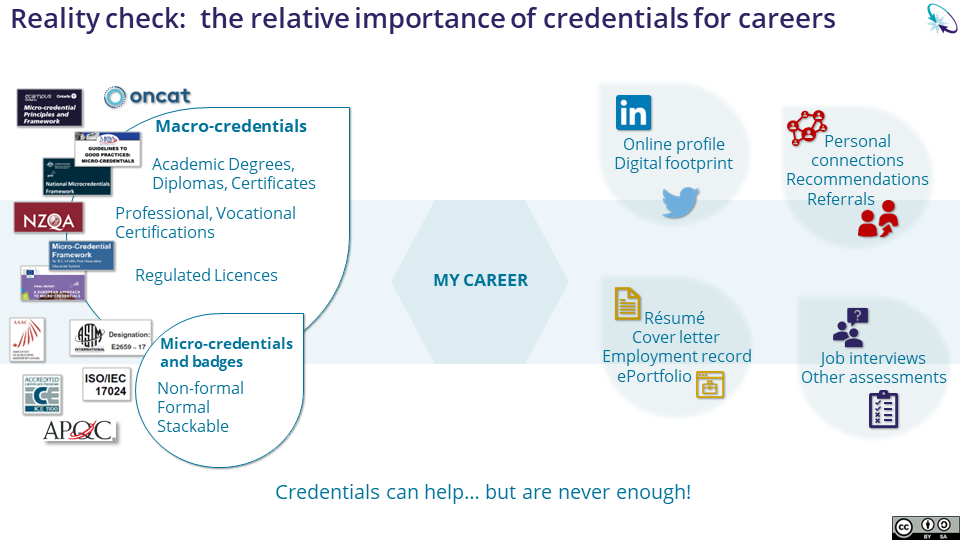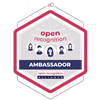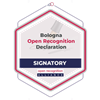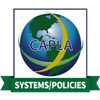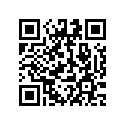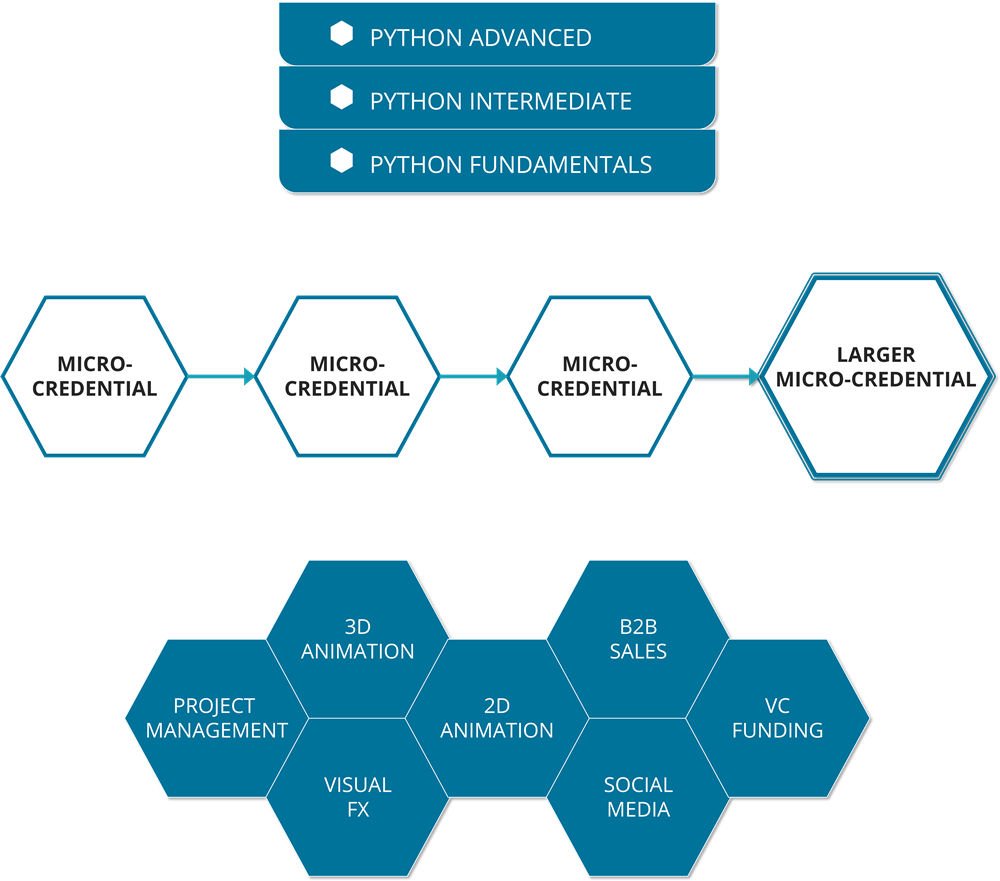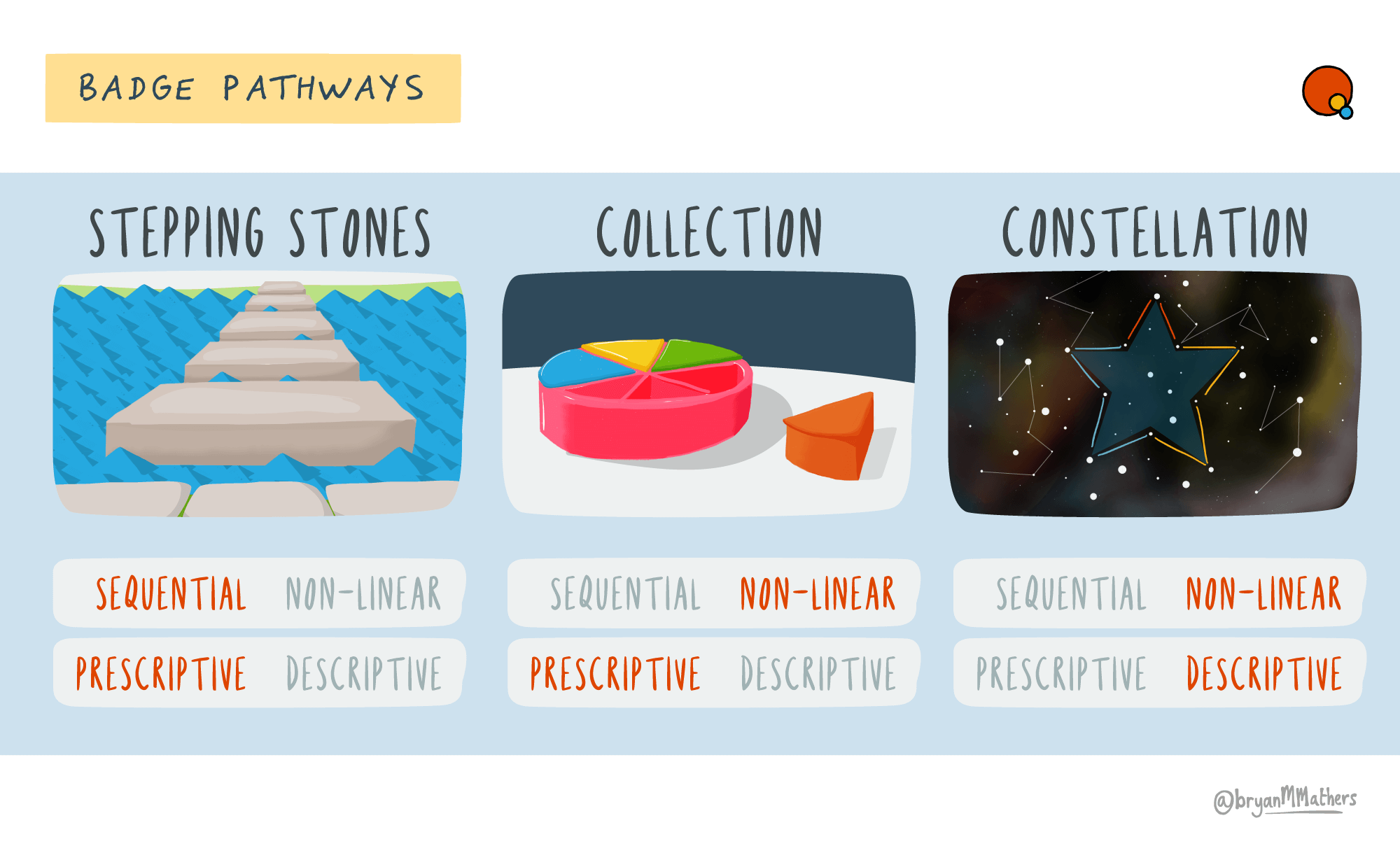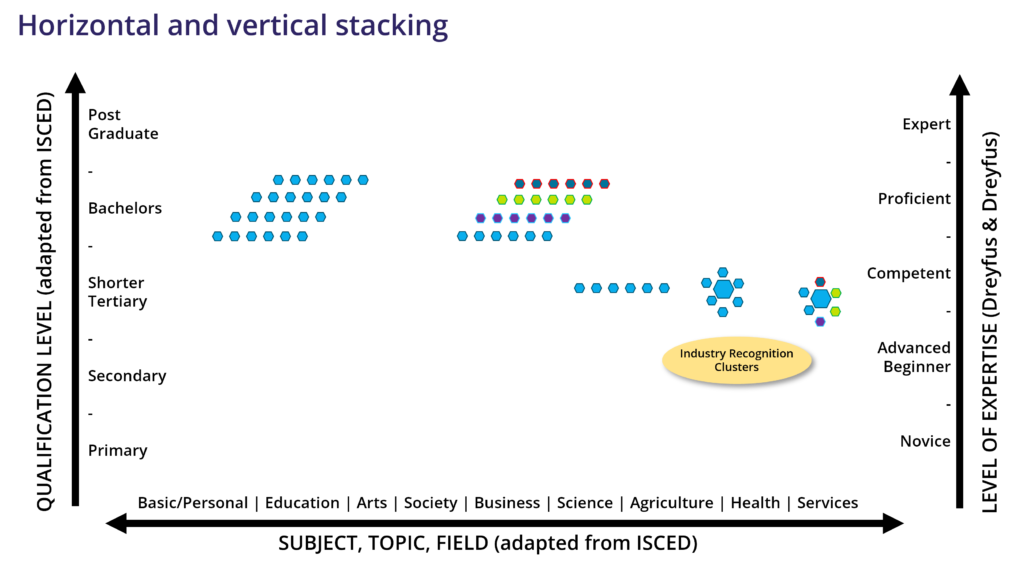This is a long, nerdy analysis of badge types, but it does have some quickly scannable colourful graphics and it does highlight new entries like 1EdTech’s TrustEd Microcredential and ASTM’s recently published standard for Competency-based Workplace Learning Programs.
It picks up on a previous post, where I shared the Learning Agents Adaptable Badge Taxonomy for community feedback. In this post, I update that taxonomy and compare it to other frameworks out there.
About badges…
To avoid confusion with this post, it’s important to lay out some basic concepts about badges, such as:
A badge is NOT an award that is either too small or not “good enough” to be a micro-credential
… despite what others might tell you.
Digital badges are flexible digital credentials that can represent a wide variety of use cases. Their scope is limited mainly by the imagination. Digital badges span the full spectrum of recognition from formal through nonformal to informal, including professional licences and certifications, diplomas and other macro-credentials, for-credit micro-credentials, non-formal workplace training badges and many, many, many other use cases for recognition of learning and achievement that can be lifelong and lifewide.
Digital badges = containers for claims
As with shipping containers, you need to pay attention to the manifest, check the contents and pick up on other clues, like the idenitity of the originator: does it contain something unique and useful, or is it “same old, same old” or is it just recycled plastic trash? Note that the claims don’t need to be formal or high stakes, but they should be clear, relevant to the context and well supported.
When people say “digital badges” they usually mean portable digital credentials that are created and issued using the Open Badges standard, i.e. not gamification stickers, like Khan Academy’s or proprietary website-specific badges like those from LinkedIn Learning or LinkedIn Skills that serve their business model and skills graph needs rather than supporting a recognition ecosystem (stop ranting, Don).
It’s also really important to say this:
micro-credential ≠ course
A micro-credential can certainly be a course certificate, and that’s an all too dominant use case, but it’s important to remember that there are many ways to learn and develop and many ways to recognize learning and development that go way beyond training courses. And badges can handle them all, given the right mindset. So, for our purposes in this post:
micro-credential = (non)formal badge awarded after summative assessment
.. ie micro-credentials inhabit the formal end of the recognition spectrum. Summative means partly that it should be possible to fail. They can be for “formal” for credit or “nonformal” non-credit, but possibly high stakes (e.g. for career). I’m leaving out for the moment notions of quality, qualified issuer, industry relevance, etc., to avoid turning this blog post into a sequel to War and Peace.
Ultimately, done right, badges are more than stickers or certificates – they can tell authentic stories of learning, achievement and aspirational learning journeys.
Feedback & updates to the Learning Agents taxonomy
When I posted the Learning Agents adaptable taxonomy of badge types for community feedback back in February, I did get lots of feedback, so thanks for that!
Noah Geisel’s feedback gave me the most pause – he worried that having defined “buckets” for badge types could be misinterpreted by many as being prescriptive (it MUST fit into one of these buckets) rather than descriptive and adaptable “popular spots along the spectrum”, which was my intention.
So here’s a metaphor that might work better: “spaces” in a co-working facility with adjustable walls. I hope I heard him well when I adjusted my walls here:
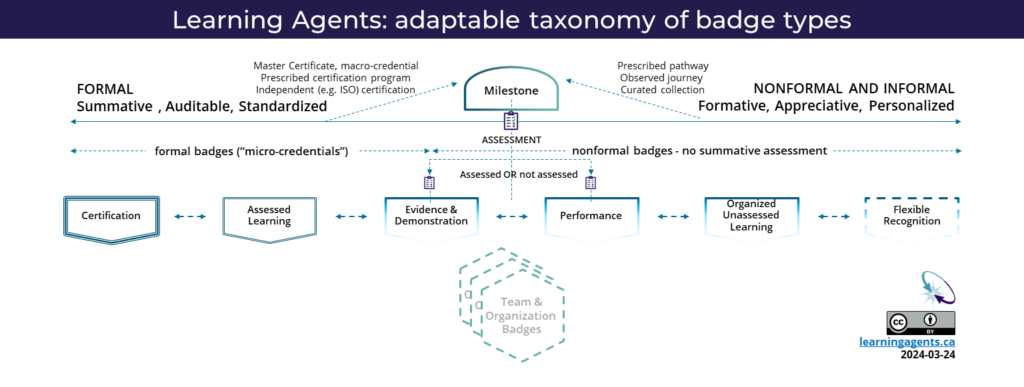
Some notes about the above…
Emphazing continuity and remixability
Basically, I made the buckets look more like adjustable “spaces” and added double-pointed arrows between the spaces, indicating that they can morph into each other and be combined/stacked into each other in diverse ways. It’s also possible that a less formal badge can be formalized, through a kind of PLAR-like endorsement. For example, my colleague Serge Ravet hopes to be soon working on a project for home care workers that would see informal recognitions of practice (badges) transformed into nonformal and even formal recognition. But I suspect it’s easier to develop a more formal badge by submitting less formal badges as evidence, perhaps supported by other evidence, reflection and/or endorsement… transformation as repackaging with other elements.
This “space morphing” can work quite well for the less formal badges, but there are industry standards out there for many course certificates and certifications, even beyond academic certification standards, so those spaces are a lot less flexible: the walls tend to have structural steel or concrete in them, and the diagram reflects that.
Lumping vs splitting
I had recently lumped (merged) the Completion and Participation spaces into Organized Learning. In the feedback I got, some felt that this type was now confusable with Assessed Learning, so I’ve made it more explicit as Organized Unassessed Learning, which can include things like events. Of course, in the spirit of adaptability, some may choose to re-split these sub-types into separate types again for their particular context.
I went the other way with the Performance space, splitting that into:
- Evidence & Demonstration: examination at a particular time (SHOWS, in Miller’s Pyramid)
- Performance: behaviour over time (DOES, in Miller’s Pyramid)
Opinions may differ; if so, merge away!
Flexing the flexible
I’ve also now added more detail to the Flexible Recognition space, building out examples in areas like community recognition and self-declaration, but this is definitely not an exhaustive list! The idea here is that informal recogntion can be VERY useful in many cases, such as:
- Learning who’s who in a community of practice (e.g. ambassador, guru, mentor, newbie)
- Developing authentic, supportable self-declarations to behavioural interview questions (greatest strength, achievements you’re proud of, stuff you’re working on, goals for your career, etc.)
I have another slide where I provide lots more examples along the spectrum, but I won’t bore you with that now – maybe later!
Comparing the Learning Agents taxonomy to others
This is the fun part and was actually the trigger for this post.
I’ve been very pleased to start seeing more attempts to differentiate badges, amid what’s frankly been an all too pervasive Monsanto-esque micro-credential monoculture. These new efforts start getting us away from false binary choices like badge vs. micro-credential and begin exploring interesting nuances in formal/nonformal/informal recognition. A good example is Scouts Australia, a Registered Training Organisation that is nationally accredited to award vocational qualifications. Jeffrey Lehrer shared a Six Sigma inspired typology at the ePIC 2023 conference last December, and repeated it in a March 13 session of Open Skills Network’s Open Recognition Workgroup (link to March 13 recording):
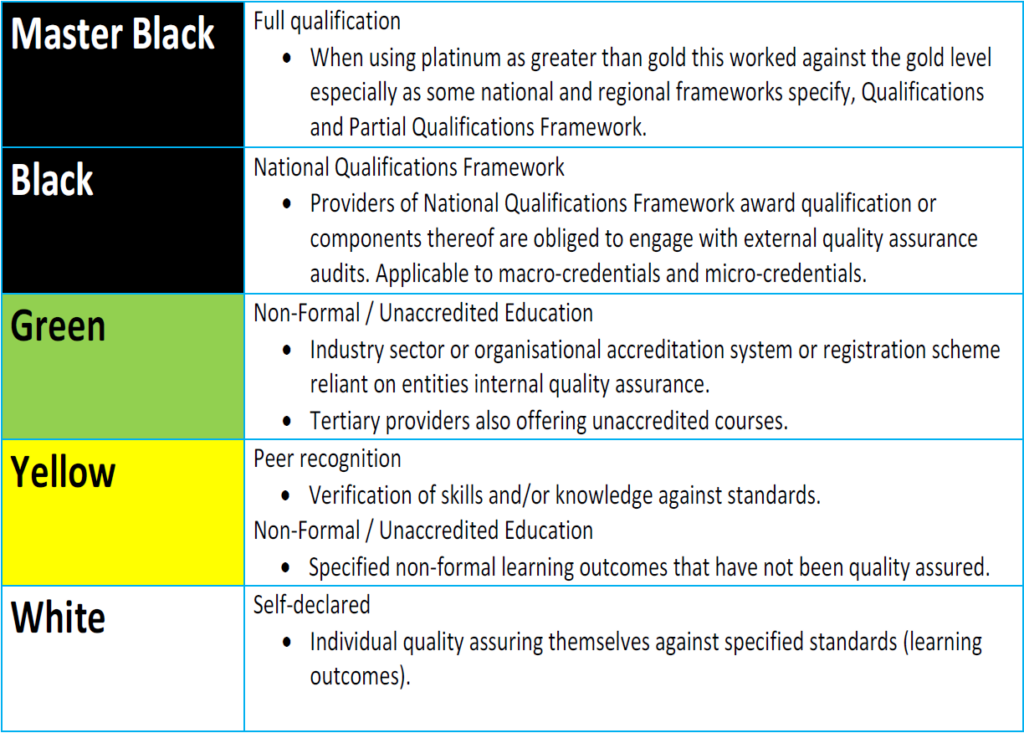
and even the 1EdTech folks, who admittedly have enabled a lot of “in the box” micro-credential/transcript thinking since they took over the Open Badges standard… but see them here making an attempt to differentiate between Knowledge and Application, albeit in a fairly restrictive boxlike “TrustEd” way, that lumps everything else into a “non-trusted” category and has no provision for learner self-declaration:
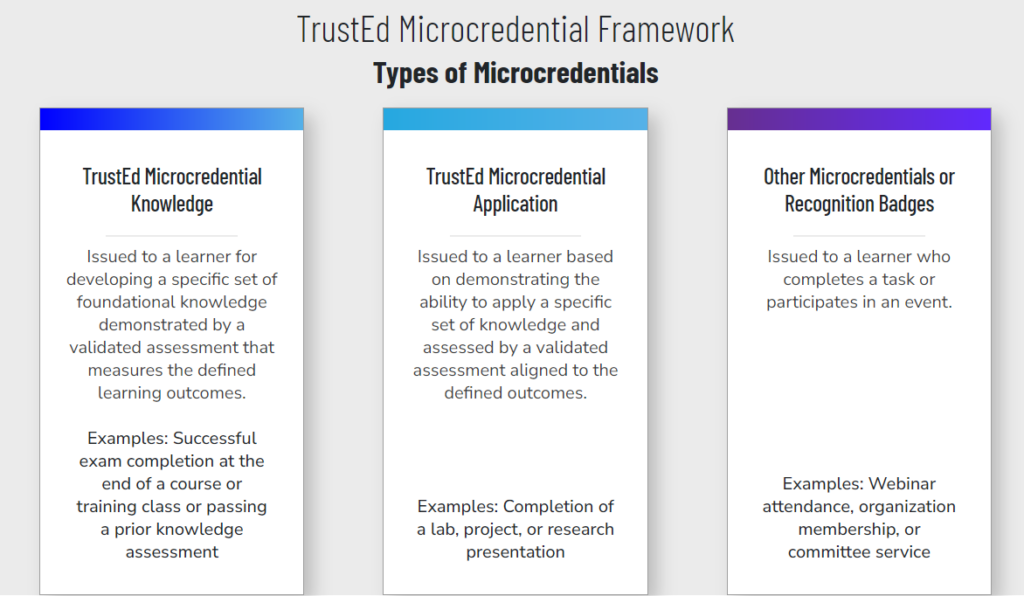
(Version 1 – I’m hopeful that it will improve.)
As a reminder, I published the Learning Agents taxonomy based on some co-creation for the Inter-American Development Bank’s IDB Digital Credential Framework:

It’s worked out well for them and their framework is now being adapted by Team Democracy for the civicscredentialing.org badging system that’s being developed in the US. Here’s a preview of that:
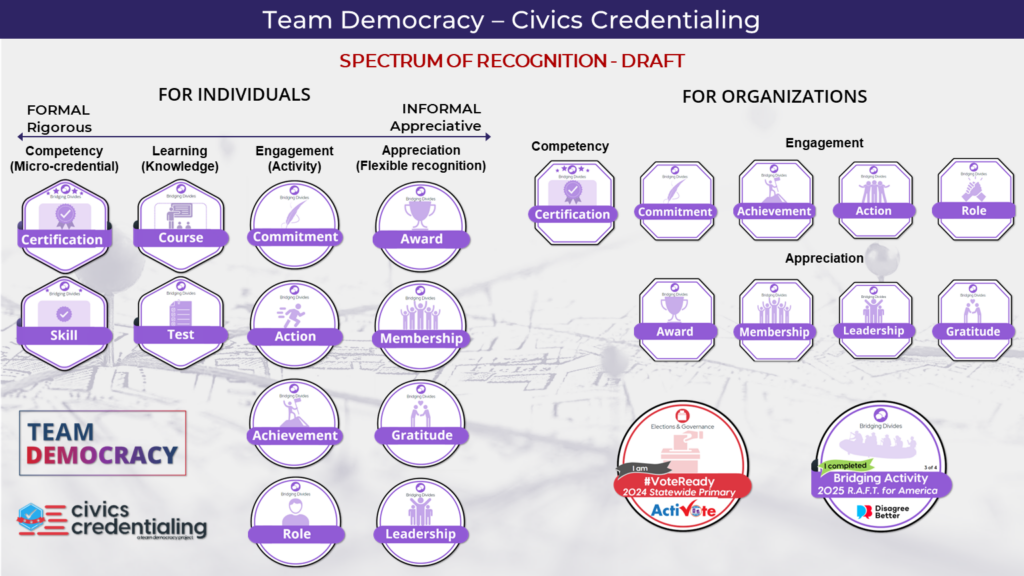
I need to also need to acknowledge the very practical workflow developed by Lesley Voigt in late 2019/early 2020 for Madison College Digital Credentials Institute’s Digital Badge Taxonomy:
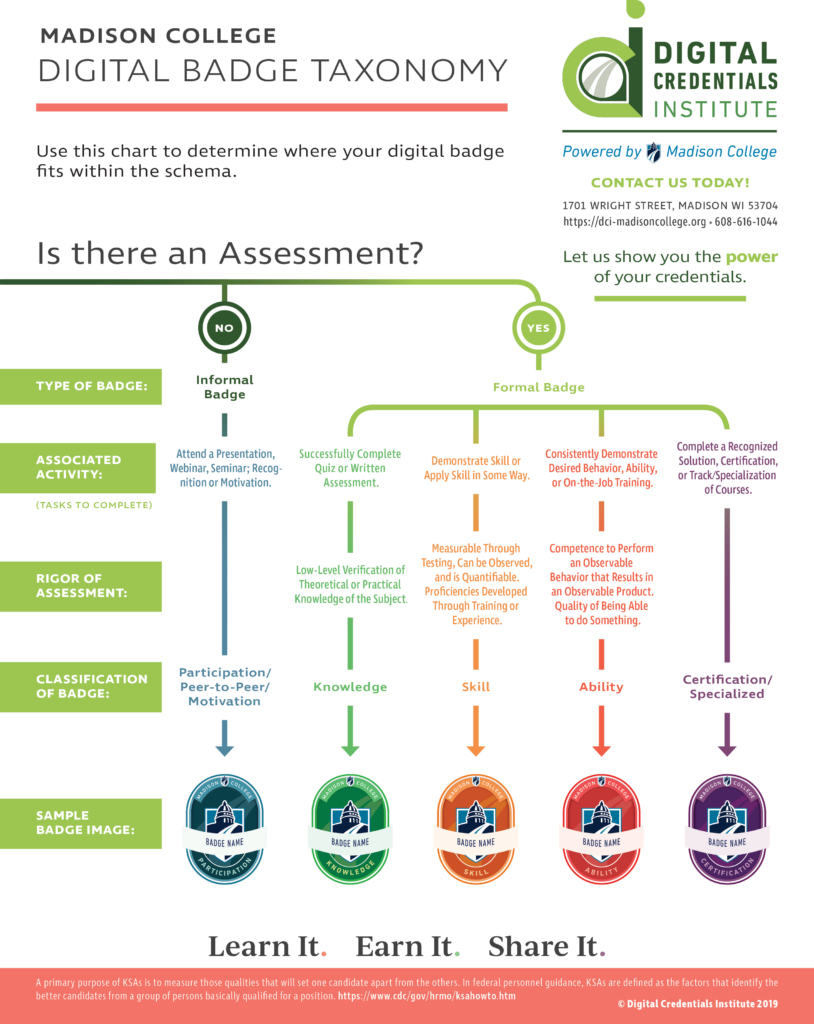
It’s also important to mention at least some of the industry standards out there for assessment and recognition:
- ASTM E2659-18 Standard Practice for Certificate Programs
- ASTM E3416-23 Standard practice for Competency-based Workplace Learning Programs
- ICE 1100:2019 – Standard for Assessment-Based Certificate Programs
- 2021 NCCA Standards for the Accreditation of Certification Programs
- ISO/IEC 17024:2012 Conformity assessment — General requirements for bodies operating certification of persons
Various pundits are becoming fond of saying that “micro-credentials are not new” and indeed that’s true: they’re typically course certificates in colourful new Spandex suits.
So certificate and certification standards are important elements in an inclusive taxonomy and many regulatory, professional and industry bodies have been using these standards for decades. The list above highlights a very recent new addition in italics, which my colleague Jeremy McQuigge from CAWBL believes should be labeled Work-Based Learning or WBL, but that’s another post, maybe from him! I’m still working my way through the new standard and seeking feedback from knowledgeable colleagues like Jeremy.
I haven’t included Quality Matters or other academic accreditation systems, because I’m trying to take the badge/recognition dialogue beyond the ivory tower.
Analysis
This is a big list of things and hard to visualize all at once. So, being the “opening up recognition” nerd that I am, I thought it might be fun to cram everything I could onto one slide:

You need to select the image to view it full size.
I was going to add lots of arrows to connect things, but that would have made things even busier, so I decided to try analyzing them in a table to check for gaps, overlaps and any new ideas that might pop up:
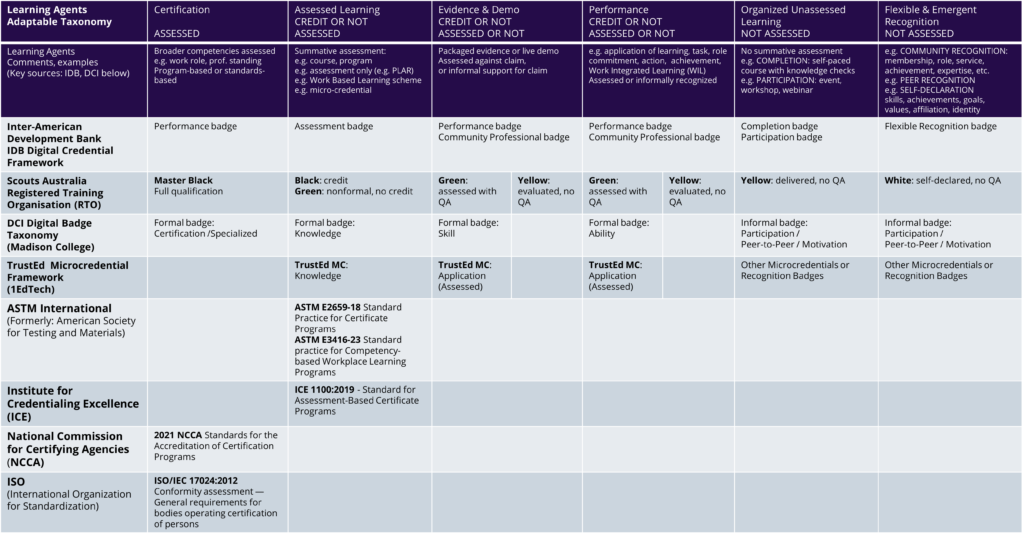
Some notes…
I think the Learning Agents taxonomy holds up pretty well overall – of course it’s very similar to the IDB framework from where it draws a lot of its inspiration, but it’s also great to see Scouts Australia call for self-declared assertions. And the Madison DCI taxonomy is also holding up pretty well, although again no self-assertion. I wonder why 1EdTech’s TrustEd Microcredential Framework didn’t include it? I do note that Madison College doesn’t seem to be a member of 1EdTech, so that may be a factor.
Those four top rows have the best coverage across the scope of recognition. More than a single flavour micro-credential, certainly.
I’d love to see more about capturing and recognizing Work Based Learning. I’m hopeful that organizations like the US Chamber of Commerce Foundation and the Council for Advancing Work Based Learning can help.
And I don’t do any analysis here of team, group, organization or community badges – these increasingly important, but for another post.
Looking forward
Part of the reason I’m diving so deep into all this is that we’re starting to do a lot of work in adult learning in French Canada, alors mon français est en train de s’épanouir… 8->
That community is currently abuzz with an amendment to the Official Languages Act that just went through on January 1st of this year. Here’s a clipping from the gc.ca website:
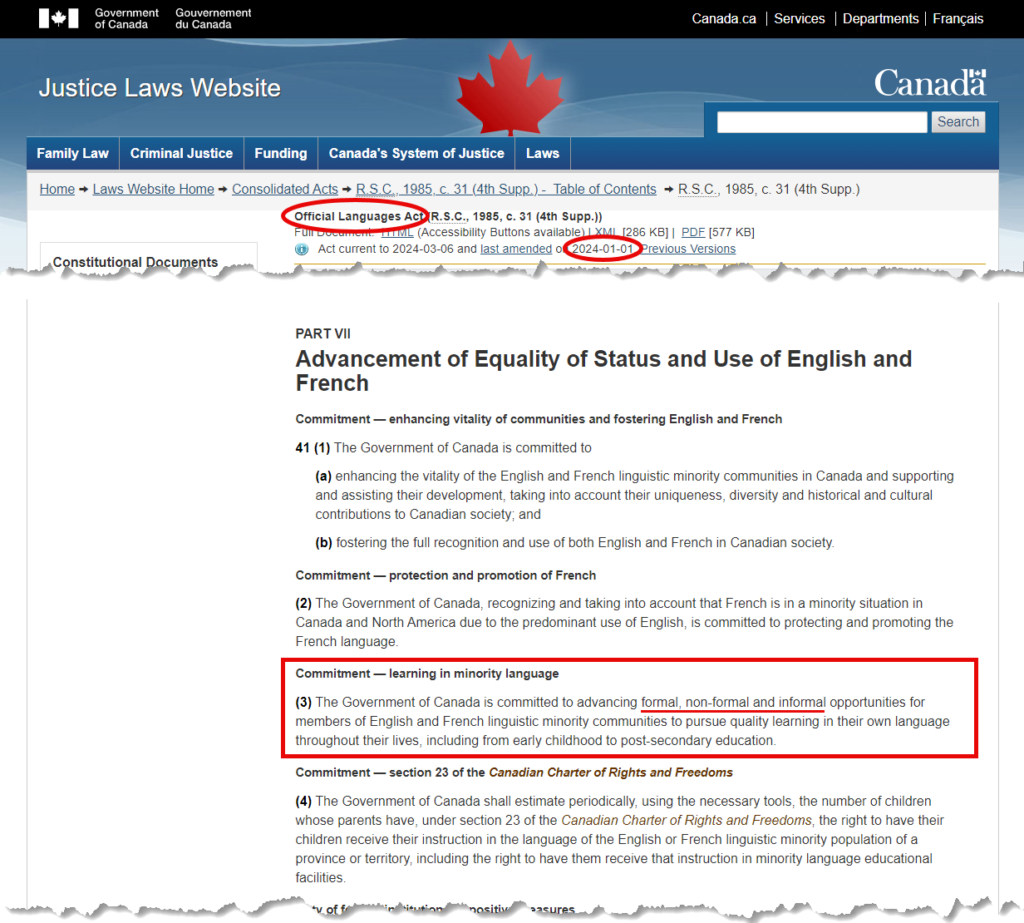
Quality lifelong learning opportunities for linguistic minority communities that can be formal, non-formal and informal… wow.
It sounds even better in French:
…faire des apprentissages de qualité, en contexte formel, non formel ou informel, dans leur propre langue tout au long de leur vie…
Or, as Mona Audet, a community leader from Manitoba improved it at a recent national summit:
Tout au long de leur vie et tout au large de leur vie
Mona AUDET, pluri-elles, Manitoba
Lifelong and lifewide learning. I can understand why they’re excited, it kind of makes me want to move back to Quebec as an Anglo. So, believe me when I say that they are ALL OVER the notion of opening up recognition. As just one example, see how the Ontario Coalition for Adult Learning (COFA) is piloting evidence-based badges for adult learning practitioners that align to a recently developed competency framework for the workforce. Not courses, but packages of evidence or « preuves », as they call them, in this case submitted for assessment by competent professionals.
There’s another badge system being developed for community learning implementation in several provinces called Familles engagées that engages entire families in projects to improve their local communities, activating their lifewide skills and capabililties (and sense of self-efficacy and citizenship) in the process. And recognizing that.
I’m very happy to be working with these communities on this inclusive approach to lifelong, lifewide learning. For myself, this is also a great opportunity to renew my own lifelong learning relationship with French – that’s a story in itself, that I may well tell in a badge sometime… 8->

